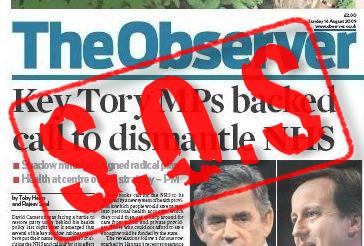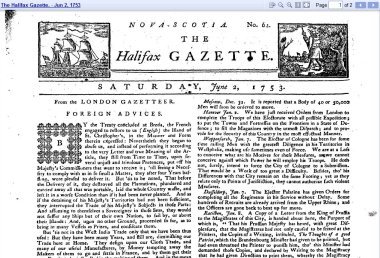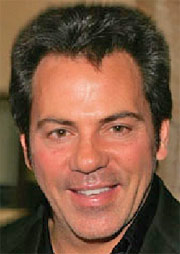We’d like to be able to close out the week on a happier note, but the evidence that newspaper executives and union leaders have no friggin’ clue about the enormity of the challenges facing them just keeps on coming. Consider:
 Newspaper layoffs have hit young people the hardest, according to a survey by the Associated Press Managing Editors. The survey of 95 editors found that newsroom staffs have shrunk more than 10% in the last year and that workers between the ages of 18 and 35 were the most likely to be shown the door. This information comes at a time when newspapers are desperately struggling to become relevant to precisely that age group. It’s not that the editors want to lay off all the young staff, but union rules require them to preserve the jobs of older – and more change-averse – employees at the expense of younger and cheaper workers. We like Silicon Alley’s graphic accompanying this story. It shows a man aiming a revolver at his foot.
Newspaper layoffs have hit young people the hardest, according to a survey by the Associated Press Managing Editors. The survey of 95 editors found that newsroom staffs have shrunk more than 10% in the last year and that workers between the ages of 18 and 35 were the most likely to be shown the door. This information comes at a time when newspapers are desperately struggling to become relevant to precisely that age group. It’s not that the editors want to lay off all the young staff, but union rules require them to preserve the jobs of older – and more change-averse – employees at the expense of younger and cheaper workers. We like Silicon Alley’s graphic accompanying this story. It shows a man aiming a revolver at his foot.
Ken Doctor of Outsell has a new report on the state of newspaper companies’ digital migration efforts and he comes to some pretty bleak conclusions. Newspapers derived just 11% of their revenues from digital sources in 2008, Doctor found. In comparison, the rest of the information industry gets 70% of its revenue online. In other words, the specialty publishing markets have substantially completed their migration to digital business models while newspapers are just beginning.
It gets worse. Online revenue for newspapers is now static or declining while it’s growing nearly everywhere else. And all the major publishers except Dow Jones are losing market share. “The news segment still stands out as the biggest laggard in the information industry overall,” Doctor says. Listen to our August interview with Doctor.
Miscellany
The number of reporters on Capitol Hill isn’t declining, but the profile is changing. There were 819 accredited reporters from mainstream US newspapers and wire services on the Hill in 2009, a decline of 193 – or 19% – from the previous year, according to the Pew Research Center. However, the gap is being filled by reporters from niche and specialty publications. There were 500 of them in the galleries this year, up from 335 a decade ago. As a result, the full Washington press corps has remained fairly stable at between 1,300 and 1,500 souls over the last 20 years. It’s just that newspapers now make up less than half the total, compared to two-thirds a decade ago.
The authors of the study note that ordinary Joes are privy to less and less information about their government, while well-heeled business types can afford to finance on-site reportage that keeps them in the lobbying loop. And the advantage isn’t limited to conservative business interests. “The Washington bureau of Mother Jones, a San Francisco-based, left-leaning non-profit magazine, which had no reporters permanently assigned to the nation’s capital a decade ago, today has seven, about the same size as the now-reduced Time magazine bureau,” the study notes.
The Pittsburgh Post-Gazette is the latest newspaper to jump on the pay-wall bandwagon. Its new PG+ section went live this week, offering bonus features like “social networking, live chats, videos, blogs and behind-the-scenes” look at the daily news,” according to president Christopher H. Chamberlain. Standard daily fare will remain free, but for $3.99/month or $36/year, readers will get exclusive access to the thoughts of Steelers reporter Ed Bouchette, as well as undefined special offers. We’ll see. You can tour the “PG+ Experience” here.
The folks at North America’s largest French-language daily must have liked what they saw in Boston, where The New York Times Co. successfully stared down unions at the Boston Globe and won significant cost reductions. Montreal’s La Presse will shut down Dec. 1 if the newspaper’s eight unions don’t help it cut $26 million in operating expenses. Among the concessions management is seeking are the end of a four-day work week for full-time pay and elimination of as many as 100 of the 700 jobs at the newspaper. The union says it’s open to discussion if it can see the paper’s books. La Presse cut out Sunday publication earlier this year in order to save money.



 The Newspaper Guild stalled for time in an attempt to block massive pay cuts at the Boston Globe, but it strategy may have ultimately backfired, reports The New York Times. In a behind-the-scenes look at
The Newspaper Guild stalled for time in an attempt to block massive pay cuts at the Boston Globe, but it strategy may have ultimately backfired, reports The New York Times. In a behind-the-scenes look at 

 Billionaire investor Warren Buffett reads five newspapers every day, but he
Billionaire investor Warren Buffett reads five newspapers every day, but he  The New York Times Company shocked the newspaper industry last week with its threats close the Boston Globe on May 1 unless Globe unions give back $20 million in concessions. There’s new evidence that the May 1 date is a bluff and that closing down the Globe could cost the Times more than keeping it in business.
The New York Times Company shocked the newspaper industry last week with its threats close the Boston Globe on May 1 unless Globe unions give back $20 million in concessions. There’s new evidence that the May 1 date is a bluff and that closing down the Globe could cost the Times more than keeping it in business. The Herald’s rapacious columnist, Howie Carr (left),
The Herald’s rapacious columnist, Howie Carr (left), 

 Today is Newspaper Death Watch’s second birthday (you can
Today is Newspaper Death Watch’s second birthday (you can  Mark Potts
Mark Potts 


